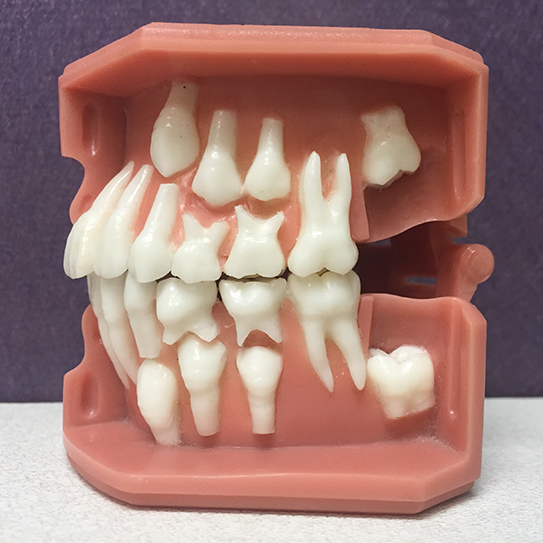Baby Teeth After Age 13 Are a Serious Problem
January 22nd, 2016

WHAT IF YOU'RE 13 YEARS OLD AND you still have a baby tooth? A baby tooth at age 13 indicates an orthodontic and dental health problem.
Baby Teeth Shouldn’t Be Present After Age 13
Most children lose their last baby tooth by age 12. Girls can be up to two years earlier than boys and lose their last baby tooth by age 10. Boys could lose their last baby tooth as late as age 13. In either case, boys or girls, baby teeth present after age 13 are cause for concern.
If you or your child are over the age of 13 and still have a baby tooth, it is important to have an orthodontic examination with an orthodontist as soon as possible.
4 Possible Problems of a Baby Tooth at Age 13
#1: Your baby tooth is stuck to the bone (ankylosed).
It will not fall out on it's own. The permanent tooth below is unable to push the baby tooth out. This baby tooth needs to be extracted as soon as possible.
#2: The baby tooth is mechanically blocked from falling out.
It is obstructed by crowded side teeth. It can't make an exit, like being too wide for a doorway. There is crowding and braces are needed to allow the baby tooth to fall out or be extracted.
#3: The permanent tooth below is crooked, malpositioned, or sizeways and can't push the baby tooth out.
The permanent tooth in the bone under the baby tooth is is in a poor position and will never come into the mouth without orthodontic treatment. Even if the baby tooth is extracted the permanent tooth will not come into the mouth. Your orthodontist and oral surgeon can bring this impacted permanent tooth into position by removing the baby tooth, exposing the permanent tooth, and then moving it with braces into the mouth.
#4: A permanent tooth is missing.
Below the baby tooth there is a missing permanent tooth. You have tooth agenesis (congenitally missing tooth). You will need to maintain this baby tooth as long as possible and replace it with a dental implant or bridge in the future.
We're Here To Help!
If your general dentist has told you or your child that there is still a baby tooth at age 13, see an orthodontist as soon as possible. To find an orthodontist in you area, contact the American Association of Orthodontist at www.mylifemysmile.com.
At 13 years old, you're not a baby any longer. Take care of your last baby tooth today to find out how you can restore dental health.
Follow Dr. Gorczyca on Twitter @drgorczyca
Gorczyca Orthodontics, www.clubbraces.com.










